In Ísafjörður, the capital of Iceland’s remote Westfjords region, a Lutheran pastor compared eiderdown to cocaine. “I sometimes think that we are like the coca farmers in Colombia,” he said. “We [the down harvesters] get a fraction of the price when the product hits the streets of Tokyo. This is the finest down in the world and we are exporting it in black garbage bags.”
It is difficult to describe the weight of eiderdown in a language in which the epitome of lightness is a feather. Unlike a feather’s ordered barbs arranged around a solid shaft, under a microscope, eiderdown offers a portrait of chaos: hundreds of soft threads branch out from a single point, twisting around one another. Upon each thread are countless small hooks, which allow the down to cling to itself, trapping pockets of air and warmth.
When I returned from Iceland, I asked my wife to close her eyes and put her hands out. After placing a duck-size clump of down in her hands, I asked her what she felt. “Heat,” she said. She opened her eyes to find the down, a ghostly grey form, hovering above her palms, and pulled it apart. It crackled as if electrified, emitting a mild smell that reminded me of burned hair. She scrunched her hands and the down disappeared in her fingers, compressed into a ball smaller than a duckling’s bill.
Over centuries, eiderdown has been treasured by those who shared their lands with the eider. The Vikings apparently filled their bedding with it, while medieval tax collectors accepted it as a means of payment. Today, its buyers are the global super-rich. In Iceland, I heard stories about Gulf royals who sleep under eiderdown in the desert, and Russian politicians whose hearts can be warmed with the gift of an eiderdown duvet.
The properties of eiderdown – extreme lightness and insulation – make sense when you consider the life of its owner. The eider is a fat seabird, more penguin than duck, and many of them spend most of their lives in the Arctic Circle. Visit the Icelandic coast and you will see hundreds bobbing gregariously in the sea. Brash creatures, their boldness inspires admiration in the Icelanders. “The eider is an unsung hero, far braver than any bird of prey, which it is known to attack to protect its offspring,” one local told me.
The usual story of how feathers come to fill our bedding is anything but comforting. According to trade bodies, most feathers are a byproduct of the meat industry. Less fortunate birds may have their plumage ripped out while they are still alive, a practice known as live-plucking.
As I held a clump of eiderdown in my hand, however, one Icelander told me something that seemed to offer an alternative to this unsettling relationship between humans and birds. He said that the eider it once belonged to is probably still alive. Not in some dark barn, or even in an open-air enclosure, but in the wilds of the Arctic Circle.
In a cafe in Ísafjörður, the pastor explained how he harvests eiderdown. As part of his parish duties, he runs a small farm, a throwback to earlier times when pastors in remote areas would survive off the land. Every June, he said, about 500 ducks arrive from the sea and waddle to his farm. Eiders do not naturally nest in such large colonies, but will congregate close to human settlements to seek shelter and protection. The ducks nest anywhere: in tyres, doorways and even houses. “I always take a lot of flags with me and I put a flag beside each nest so I will be able to find it again. Because they are incredibly camouflaged, these ducks. You can almost step on them,” he said.
At night, the pastor guards the flock of eiders from their predators: seagulls, foxes and mink. “I was quite lucky in that I got interested in guns when I was just a little over 20,” he said. “It was before I started studying theology.” If he were to fall asleep, a fox would have a feast of sitting ducks. “It’s more than a financial loss, it’s also like they are depending on me. So I don’t want to let them down. I used to be a night watchman, so I have a little bit of experience staying awake.”
In the middle ages, pelicans were thought to pierce their own breast to draw blood to feed their young. The mythical act was known as vulning, a Christ-like act of self-sacrifice. On the pastor’s land, the eider, too, makes herself vulnerable for her offspring, although it is down, not blood, that she draws from her breast. From this down she builds a nest for her eggs; her own bare skin, freshly revealed, covers them with warmth. She sits on her eggs for some 28 days, during which she may lose a third of her body weight; some mothers starve to death.
After incubation, the eggs hatch, the mothers waddle back to the sea with their offspring and the pastor gathers their down, his protection fee. “I never collect the down until they are gone,” he said. “I just like to leave them, not to disturb them in any way … If you frighten them, they jump up and shit all over the nest.” The “shit” he describes is not, in fact, excrement, but a brown oily liquid with an odour similar to that of frying liver. “[It is] so strong,” recorded one Belgian eider enthusiast, “that an egg touched with it is refused and even discarded by the hungriest dog.”
The scene described by the pastor has been a common sight in Iceland for centuries. Down has been collected here probably since the arrival of Norse settlers in the ninth century. The sight of thousands of tame eiders close to human settlements astounded early European travellers in Iceland. CW Shepherd, an Englishman who visited the island of Vigur in the Westfjords in 1862, described a farm besieged by eiders: “On the ground, the house was fringed with ducks. On the turf slopes of the roof, we could see ducks; and a duck sat on the door-scraper … A windmill was infested; and so were all the outhouses, mounds, rocks and crevices. The ducks were everywhere.”
Environmentalists, economists and ornithologists have all fallen in love with Icelandic harvesting. There is an irresistible simplicity to the relationship between the harvesters and the eiders. If a harvester cares for the ducks, more and more will come to nest, increasing the amount of down that can be gathered.
In myths, fables and hagiographies, one often reads of the ability of individuals to tame wild creatures. It is said that St Cuthbert, the seventh-century missionary who settled on the Farne Islands off the Northumbrian coast, protected and tamed eiders. (Today in Northumberland, the eider is sometimes called St Cuthbert’s or Cuddy duck.) Many of these stories were built upon embellishment or pure fantasy, but in Iceland, travellers’ accounts repeatedly confirmed the existence of this strange relationship between Icelanders and the ducks.
I wanted to know how this relationship worked, how it was possible for a wild bird to behave as if it were domesticated. How did this strange tradition come about? How was it that the relationship had been preserved despite the arrival of the market? Could eiderdown harvesting teach us about our relationship with other species?
Back in Ísafjörður, the pastor told me about a Japanese film crew who had made a documentary about him. For several weeks, they followed him around his farm, recording him collecting down with his children, while sidestepping nesting eiders. He appeared bemused by their attention, just as he was by mine. After all, he said, the down was only some brauð, a slice of his daily bread.

The pastor’s parish lay a short drive from Ísafjörður in another fjord, Önundarfjörður. It was once reached via a winding mountain road but, since 1996, the two fjords have been connected by a vast tunnel that bores directly through the hillside. One morning, I emerged from its confines, blinded by the subarctic light, and headed to the pastor’s church to take a tour of his nesting area.
Like many Lutheran parishes, the pastor’s land is among the most prized in the Westfjords. In the shadow of a steep glacial wall, his family home and church overlook a floodplain that leads to the shoreline. It was hard to conceive of a more peaceful spot for a family, yet there was an air of abandonment to the pastor’s home. Children’s toys lay scattered around on the floor and a layer of dust covered the work surfaces. The previous winter, he explained, the weather had got so bad that he and his family had to leave the parish and take an apartment in Ísafjörður. He now rarely spends any time in the house. “We were trapped here for 36 hours with no electricity, no phone,” he said. “I can’t be responsible for that.”
I was late for the eiderdown season, but the pastor offered to lead me around the land and re-enact his summer ritual as he had done for the Japanese film crew. Dressed in an old Polish military uniform, he headed off across the flat plain towards the beach, hunting for any nests that he had missed. It was a still day, the silence broken only by the call of an oystercatcher, alarmed by our presence.
Walking on this flat land, I felt as if I had missed out on a great gathering. All around us were hundreds of small piles of crushed mussel shells, the remnants of the eiders’ feasting, ground up by their powerful gizzards. Quartz-like, these remains had an understated beauty, glinting in the light. “In the later part, everything is going crazy,” the pastor said. “Birds and chicks running around. Arctic terns attacking all the time. It’s good to have a broomstick.”
Later, as we made our way back to the church, the pastor let out a cry and pointed to a nest that he had missed during the previous gathering. Covered in moss, grass and broken eggs, it looked like a furry grey omelette or pancake. He wedged his stick under the down, easing it gently from the grass, and picked it up. Laden with seaweed, twigs and dirt, it reminded me of the contents of a vacuum cleaner, half fluff, half debris. Unlike the clean down my wife had held, it had a pungent, mouldy aroma, suggestive of the sitting duck from which it came. Looking closely, I saw the remains of several eggs caught up in the down. Rendered rubbery by rainfall, their fragments were proof of what the pastor had said; he always allowed the ducklings to hatch before collecting their bedding. “Take it as a gift,” he said.
Some 50 years before I visited Iceland, the Scottish writer Gavin Maxwell became momentarily possessed by Icelandic harvesting while living in Sandaig, a bay in remote western Scotland. He began to read about it and even travelled to Iceland on a research trip. Maxwell is best known for for his memoir Ring of Bright Water, which recounts his domestic life with several otters, but he also adored eiders. “Perhaps,” he mused, “it is their peculiarly uneven voices, or the way their massive bills ascend in a straight line to the top of their skulls without any ‘scoop’ in between. Or perhaps it is their curious and very individual smell, which seems as if it could have nothing to do with a bird.”
Unlike previous travel writers who described eiderdown, he dreamed of recreating the success of the Icelanders. From his cottage, he had noticed eiders nesting on a small island close to his home; he counted only 30 pairs in total, but he imagined that he might turn it into a magnet for ducks. Inspired by Icelandic methods, he proposed erecting flags, wind propellers, scarecrows, artificial nesting sites, wind shelters and decoy drake eiders to attract the ducks. He concocted plans to feed the ducks with mussels and – apparently – even to entertain them with music.
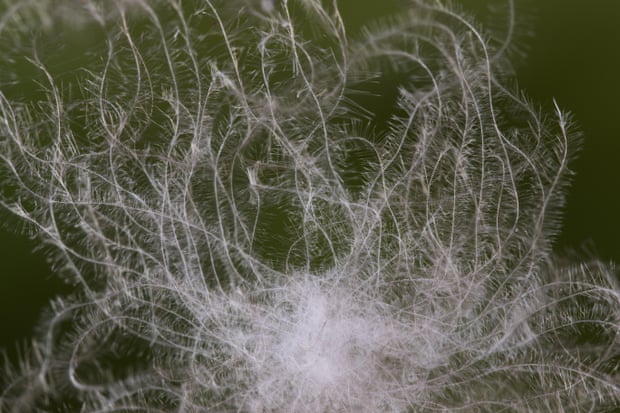
Maxwell wrote of harvesting in utopian terms, describing how early settlers had lured eiders with “an elaboration of fluttering flags, little wind-driven clacking propellers, and reeded wind instruments that would sigh, groan or trumpet, according to the strength of the breeze”. The Icelanders, he believed, had some sort of special ability to understand ducks that verged on the mystical. While he took copious notes on Icelandic techniques in an attempt to understand their success, he allowed that there was “a certain mystique” about the practice. “Some men,” he wrote, “seem to have ‘green fingers’ with Eiders.”
When I visited the pastor, I was infused with Maxwell’s own vision of down, a contrast to stories of degradation and exploitation. Patient and sensitive, the pastor seemed to fit perfectly Maxwell’s vision, heroically guarding the ducks, never taking the down too early. And yet something didn’t feel quite right. In the 19th century, British, French, Scandinavian and American travellers, many of them scientists, started visiting Iceland, which was then a Danish colony. Wandering through its volcanic landscape, admiring the frames of its miniature horses and its colossal populations of eiders, or listening to the Icelandic tongue, they described Iceland in magical terms. Fed up with their descriptions of “scenes of thrilling horror, of majestic grandeur, and of heavenly beauty”, the explorer Richard Burton wrote of a condition called “Iceland on the brain”. I feared that I was falling into a similar trap, failing to write about another character in the drama.
The Arctic fox – Vulpes lagopus – is the only mammal in Iceland whose presence predates the island’s settlement. Much smaller than its red cousin, the Arctic fox has miniature soft paws that are entirely covered in fur (hence its species name, which means “rabbit foot” in Latin). Perfectly adapted to the country’s varying seasons, the foxes can roam thousands of kilometres, their winter coats transforming from white to brown or even blue in the summer months.
When settlers arrived with domestic animals, it was inevitable that they would clash with the Arctic fox. Fearful of the threat to livestock, farmers clubbed, trapped and later poisoned and shot them. Such was the fear of the foxes among Icelanders that a myth emerged that they had been sent by the king of Norway to punish settlers for their abandonment of their motherland. Legislation to encourage their extermination dates back to 1295, and even today each community in Iceland is obliged to hire a fox killer to visit all known dens in the area to exterminate their occupants.
As I drove back from the pastor’s farm to Ísafjörður, it struck me as unlikely that the pastor, this kind man who refused to disturb an eider, was a true fox killer. Despite the military uniform, glasses and talk of guns, he never actually described killing a fox. I later asked his friend and neighbour, a long-time eider farmer, who really kills the foxes in the fjord. “I do,” he said with a smile. “The priest has never shot a single fox.”
I wondered whether I had not experienced a sanitised version of down harvesting, one primed for the Japanese market. I asked around in the Westfjords, searching for the name of an effective fox killer. Again and again the same name popped up: Valdimar Gíslason. Famed throughout the Westfjords for his cunning and ruthlessness, he had raised a private army, a band of killers to protect their capital of eider ducks. Eider farmers spoke of him in hushed tones, revering him for his dedication to fox extermination.
Gíslason lived in Dýrafjörður, the fjord beyond the pastor. The following week I visited him at his home, a sparsely furnished farmhouse that overlooked the fjord. His Danish wife, Edda, welcomed me in, the sound of choir music blending with the roar of an eiderdown dryer in a barn outside. A retired maths teacher, Gíslason has lived in the fjord for seven decades. Since his boyhood, he has gathered eiderdown from his land and pursued the foxes that wish to dine on his ducks. “Sixty-five years, 50 nights every spring,” he said, as if considering a mathematical problem. After so many nights of shooting, his hearing had begun to fade.
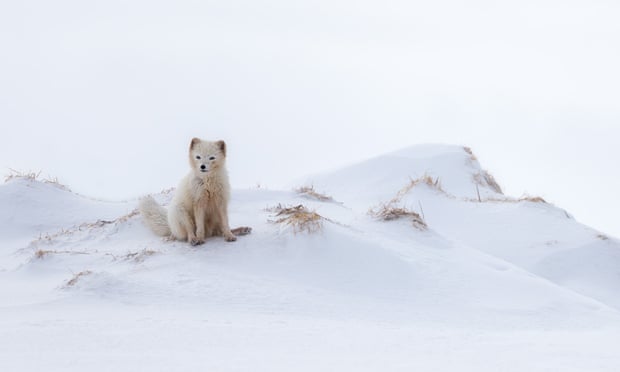
The practice of poisoning or sedating eiders’ predators was once widespread in Iceland, carried out by farmers and government officials alike. Such techniques may have saved the lives of countless ducks, but they have historically proved highly destructive to the island’s ecosystem. In the early 1980s, for example, more than 4,000 ravens were killed per year under the country’s pest control programme. Worse, the disappearance of Iceland’s white-tailed eagle, which almost went extinct in the 1960s, has been attributed partly to the activities of eiderdown farmers. Although eagle numbers have now recovered, their torrid history speaks of what Andri Snær Magnason, himself an eiderdown farmer, calls the “dark side” of the eiderdown trade: however virtuous harvesters may be, they have a strong incentive to kill any species that threatens the prized bird.
After a night of watching and shooting foxes, Gíslason and the other fox killers retire to his house to drink coffee, eat cake and recite poetry – mainly poetry about foxes. “We don’t hate them [the foxes],” he said. “They are trying to live.” As Gíslason waxed on about the foxes he had known, it was hard not to feel that he preferred them to the ducks he guarded. Unlike the eiders, the foxes made heroes of farmers, turning them into protectors. Stripped of the fox, perhaps eiderdown harvesting might be a mundane activity, a form of rent collection.
But there was another reason that explained Gíslason’s fondness for foxes, one I appreciated only once he brought out his notebook. Bound in red leather, it recorded the number of ducks that had come to his farm over five decades. In the early 1960s, it recorded more than 6,000 ducks, but gradually the figure began to decline. Today, Gíslason said, there are only 1,500 nests. I guessed that the foxes were to blame, but he replied that the fox was innocent; it was his neighbours, his fellow hunters, who had reduced his take of eiderdown.
When settlers first came to Iceland from Norway, fleeing political turmoil, they were confronted with a harsh subarctic landscape, devoid of large animals. As well as bringing their own domesticated animals and crops, settlers foraged along the island’s coastline for driftwood, molluscs, edible plants, eiderdown and beached whales. Such a windfall offered opportunities, but also potential for great conflict. Indeed, much of early Icelandic law deals specifically with harvesting rights for these scarce resources in order to avoid violence.
The sagas piled on Gíslason’s shelf, those bloody tales of Iceland’s settlement period, recount how huge disputes would erupt between settlers over driftage rights, particularly over beached whales. Like the beached whale, the ducks in Gíslason’s fjord were a finite and highly valued resource; any gain by a farmer in eiderdown would be offset by another’s loss. Yet it was impossible to conceive of any conflict over their down, to conjure a scene in which they ran towards the nests, turning their rifles on each other or making missiles of eider eggs. The fox had masked the competitive logic of the harvest, uniting the farmers in common cause, their quest to avert a duck massacre.
I did not sense any cruelty in any of the harvesters I met, merely the simple, unsentimental coldness of a people who lived off the land, who killed or starved. All this said, part of me still preferred Maxwell’s version, his image of Icelanders with “green fingers”. Walking through the Hornstrandir reserve, the most remote area of the Westfjords, I would often see Arctic foxes patrolling the banks of rivers or the coastline, looking for birds and eggs. At night, I would listen to their high-pitched calls from my tent, my dreams populated with images of small children at play. Like the birch trees that once covered Iceland, the foxes were a reminder of what this island was like before the arrival of human settlers. To kill them was to assert a certain logic that felt at odds with the promise of eiderdown, its essential balance, and I began to hunt for places in the Westfjords that might fit Maxwell’s image.
In writings on eiderdown, Æðey, a tiny island in the Westfjords peninsula, has assumed an almost pre-eminent status among nesting sites because of the vast size of its eider population. In the summer months, thousands upon thousands of eiders besiege the island, coating its grassland in brown and white hues, the sound of cooing drakes almost deafening the visitor.
It took me some five hours by car to reach the pick-up point to Æðey. A mere 15 miles (24km) of water separates it from Ísafjörður, but the coastal roads of the Westfjords wind like furled ribbons, tracing the outlines of the fjords’ fingers. Driving along them, you seem to brush your destination, only to fold back on yourself, and repeat the process.
From the pick-up point, I stepped on to a small boat belonging to Alexíus Jónasson, one of Æðey’s owners. In his mid-30s, Alexíus spoke perfect English, honed from years of reading Tolkien, Clancy and the instruction manuals for fish-processing machinery from his workplace in Ísafjörður. The sixth of seven generations who have lived on Æðey, he gathers down together with his two brothers, Jonás and Magnús. But Alexíus told me that it is their mother, Katrín, who is really in charge of the down harvest, a reminder of the key role that women and family matriarchs have traditionally played in the trade, from nest to bedding.
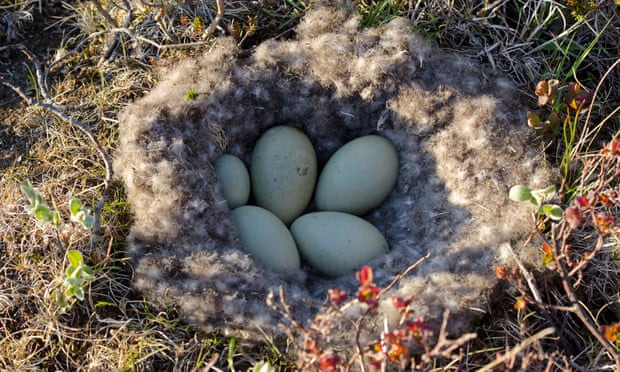
Handling the boat with expert care, Alexíus guided us across the narrow stretch of water, scattering the seabirds on its surface. As we approached the island, I could hear the cries of his children playing in the water under the gaze of his mother. “It’s nice for them to be free,” Alexíus said, before we heard a high-pitched wail. “We get the occasional argument.”
In the 18th century, the French naturalist Georges-Louis Leclerc remarked on the differences between those who harvested eiderdown in Iceland and those whom it warmed. “In that rough climate [of Iceland] the hardy hunter, clothed in a bearskin cloak, enjoys in his solitary hut a peaceful, perhaps a profound sleep, while, in polished nations, the man of ambition, stretched upon a bed of eiderdown and under a gilded roof, seeks in vain to procure the sweets of repose.” Leclerc’s words, I reflected, seemed to stand the test of time. Observing Alexíus and his family, I struggled to envision them wearing eiderdown jackets, which can cost more than £6,000 apiece; Alexíus, for his part, preferred a faded grey boiler suit.
I followed Alexíus as he wandered across the island. We headed onwards to the island’s lighthouse, studiously avoiding puffin nests in the fissures that riddle the island. At the island’s tip we sat down on a rock, admiring the spouts of several humpbacks, there to feed in Iceland’s rich waters after journeying from their breeding grounds in the Gulf of Mexico.
Watching the whales’ spouts rise and dissolve in the distance, it was easy to believe this place a rural utopia, a place where eiders could nest in peace and children roamed alongside geese, rabbits, puffins and horses. Around us life exploded from the water, the skies and the crevices in the rocks. All one had to do was to observe it, wait patiently and gather eiderdown. But then we were met by Tása, the family dog, whose job it was to catch any mink that swim over from the mainland. “She’s a gentle family dog,” Alexíus said, “but when she meets the mink she goes apeshit. It’s quite messy when she gets it. She starts one end and breaks every bone.”
The recent history of the Westfjords is really the story of rural depopulation, of a vanishing culture next to the Arctic Circle. Over the past decade, countless farmers have packed up and left the region, tired of the weather, isolation and poor roads. The region’s tunnels and bridges, intended to increase mobility, have served as escape routes, emptying the fjords of Icelanders. “The government is always making it harder for people,” Magnús said. “There’s so little money in it, being a farmer, it’s becoming a lifestyle choice.”
Unlike many livestock farms in the Westfjords, eider farms are still populated, their down a source of stable income. Faced with rising costs and falling profits, the brothers stopped sheep-farming in 1990. Instead, they chose to specialise in eiderdown. “It’s like a family thing,” Alexíus said. “Everybody helps out.”
While the Icelanders manage the eiders, drawing them to their dwellings with the promise of protection, the ducks had also bound the farmers to these remote corners. “It’s like the ducks are keeping us here,” Magnús told me. “We wouldn’t be here if it wasn’t for them.”
Yet there was another presence, one that silently haunted the harvesters’ imaginations, fed by novels or television: the men and women of ambition who wore the jackets or slept under the duvets. Unlike Icelandic wool sweaters, yoghurt or finance, eiderdown has, for much of its history, been an international commodity, first traded by the Danes, then – after Iceland’s independence – bought by middlemen in Europe and Japan. Far from isolated, Iceland’s 350 eider farms are connected to distant metropolises, with an invisible thread running between the ducks, the harvesters and the buyers, much of whose wealth, no doubt, is built on a form of resource extraction that is far removed from the gentle rhythms of down-gathering.
In many remote communities, cut off from urban centres by the harsh contours of landscape, stretches of water or walls of rock, encountering the global market has been a source of trauma, leading to a collapse in the old ways of living and seeing. But I felt no quake on Æðey or indeed on any of the other eider farms I visited. Every season, the ducks came, and their down was harvested and shipped off to the middlemen for a stable price, much as has been done for centuries. And yet there were signs, too, that things might be changing, as Iceland continues to be shaken by the effects of the financial crisis, the influx of millions of tourists and rural depopulation. Like the sheep farmers, the eiderdown harvesters were getting fed up with the harsh weather and isolation. Many eiderdown farms, said Jón Sveinsson, another harvester, are merely summer houses, places of recreation for city dwellers. “The new owners are not interested in the pittance a few kilograms of eiderdown give. After all, they have come to the countryside to have a beer on the porch, fire up the grill and relax on the weekend, not to run around harvesting foul-smelling, flea-ridden eiderdown.”
I tried to imagine what the Westfjords might look like in 50 years or so, as old ways of life faded away. “It’s not sad,” Sveinsson told me, “just different. The world is getting smaller.” But I did feel sad, thinking that this tradition might disappear. When I returned to the UK, I made a habit of checking in department stores to see if they had eiderdown quilts or pillows. Finding them in a shop window, I always felt reassured that the traffic in down continued, that this tradition still had a place in our own century of synthetics and factory farming. Nestled in silk covers, the down was always hidden from view, its rich history condensed into a short description on the label. Tempted by an act of mischief, I almost wanted to rip them apart, allowing the down and its stories to expand and escape outward.
This article was first published by The Guardian on 19 July 2019. Lead Image Source: The common eider. Photograph: Alec Owen Evans/Getty/iStockphoto. Adapted from Harvest: The Hidden Histories of Seven Natural Objects by Edward Posnett, published by The Bodley Head on 8 August and available at guardianbookshop.com.



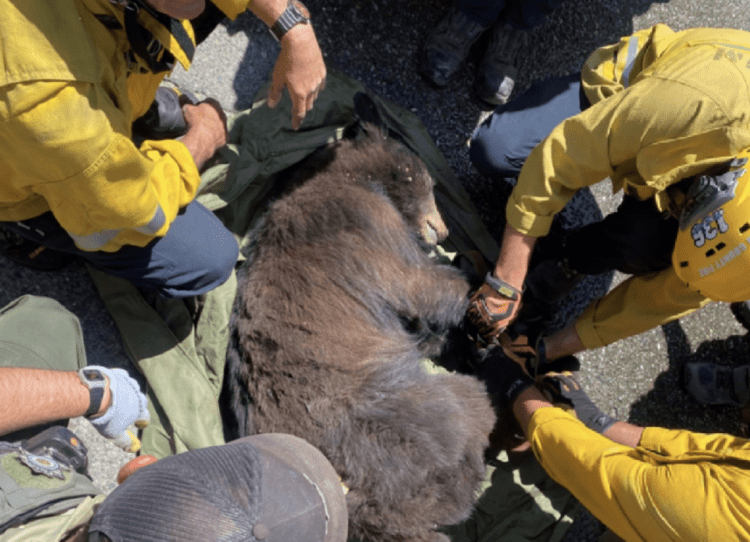
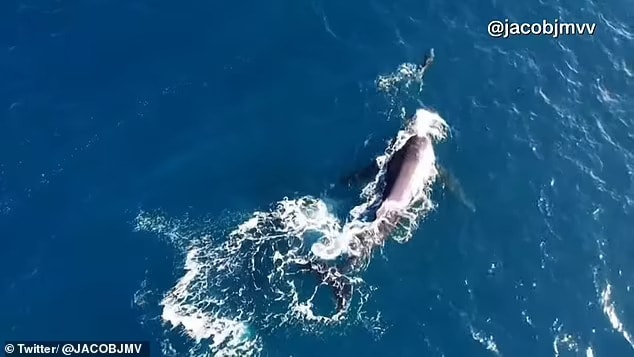

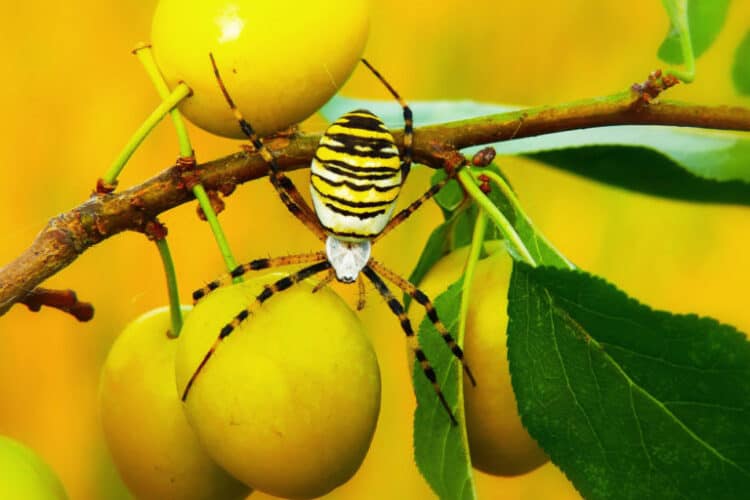
Leave a Reply